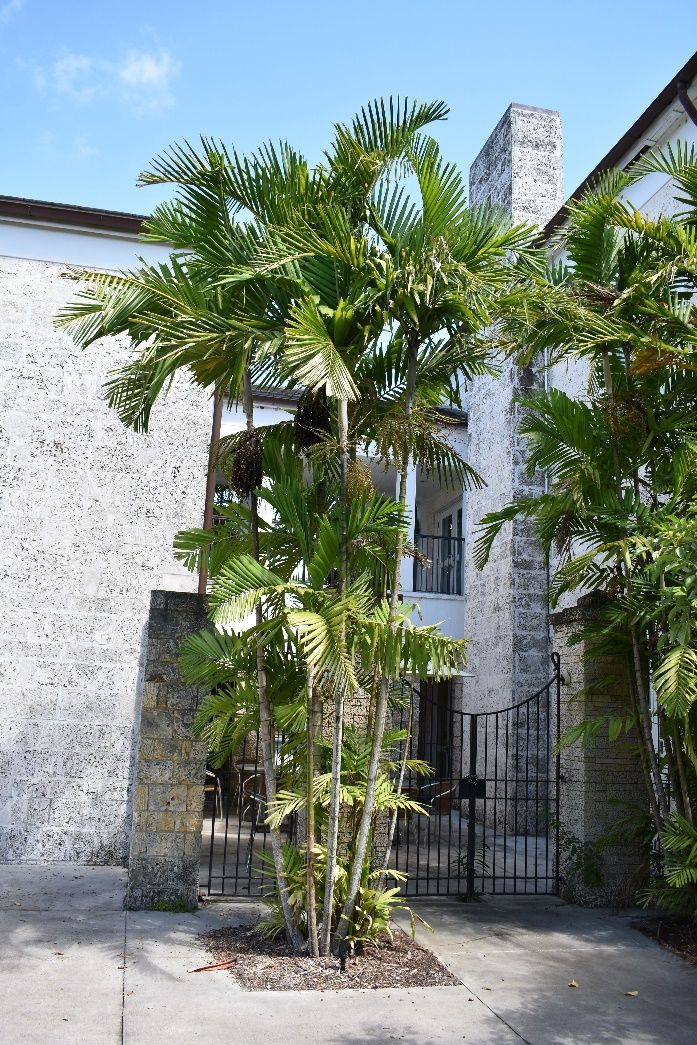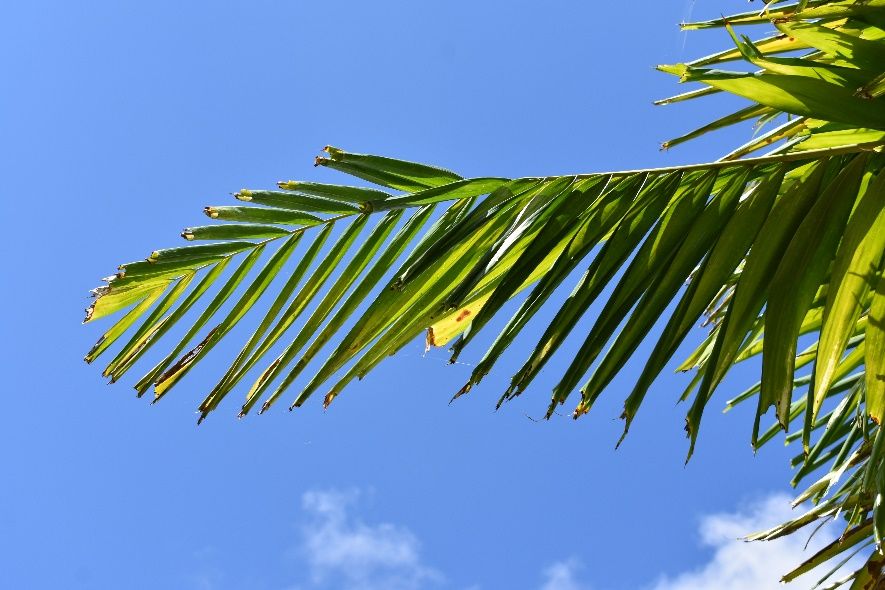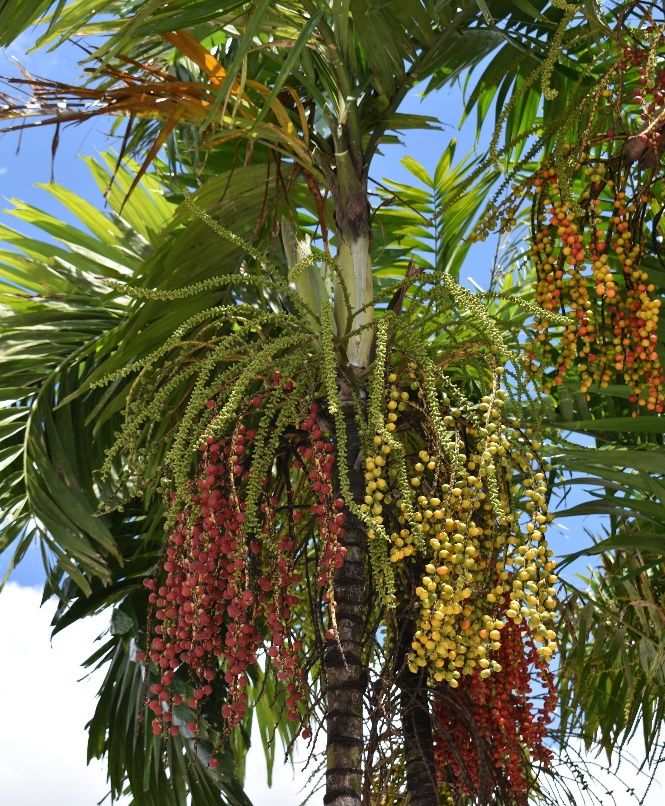Introduction
This attractive small palm is noted for its multiple, slim, ringed grey trunks which are topped with soft green, feathery, flat, broad leaves with tips that appear jagged and torn. Although able to reach 30 feet in height, Macarthur palm is most often seen 10 to 15 feet in height with a variable spread. The two-foot-long, branched flower stalks hang below the crownshaft throughout the year and contain small, white blooms. These blooms give way to bright red, showy sprays of half-inch-long fruits which ripen year-round.

Credit: Stephen Brown, UF/IFAS
General Information
Scientific name: Ptychosperma macarthurii
Pronunciation: tye-koe-SPER-muh mack-ar-THUR-ee-eye
Common name(s): Macarthur palm
Family: Arecaceae
USDA hardiness zones: 10B through 11 (Figure 2)
Origin: not native to North America
Invasive potential: not considered a problem species at this time, may be recommended (North, Central, South)
Uses: indoors; deck or patio; specimen; container or planter

Credit: UF/IFAS
Description
Height: 15 to 25 feet
Spread: 6 to 10 feet
Crown uniformity: irregular
Crown shape: palm, upright/erect
Crown density: open
Growth rate: moderate
Texture: medium
Foliage
Leaf arrangement: spiral (Figure 3)
Leaf type: odd-pinnately compound
Leaf margin: entire, incised
Leaf shape: obovate, oblong, linear
Leaf venation: parallel
Leaf type and persistence: evergreen
Leaf blade length: 8 to 12 inches
Leaf color: green
Fall color: no color change
Fall characteristic: not showy

Credit: Stephen Brown, UF/IFAS
Flower
Flower color: white/cream/gray
Flower characteristics: not showy
Fruit
Fruit shape: round, oval (Figure 4)
Fruit length: 0.5 to 1 inch
Fruit covering: fleshy
Fruit color: red
Fruit characteristics: does not attract wildlife; showy; fruit/leaves not a litter problem

Credit: Stephen Brown, UF/IFAS
Trunk and Branches
Trunk/bark/branches: branches don't droop; showy; typically multi-trunked; thorns
Pruning requirement: little required
Breakage: resistant
Current year twig color: not applicable
Current year twig thickness:
Wood specific gravity: unknown
Culture
Light requirement: full sun, partial sun or partial shade, shade tolerant
Soil tolerances: clay; sand; loam; slightly alkaline; acidic; well-drained
Drought tolerance: high
Aerosol salt tolerance: low
Other
Roots: not a problem
Winter interest: no
Outstanding tree: no
Ozone sensitivity: unknown
Verticillium wilt susceptibility: resistant
Pest resistance: resistant to pests/diseases
Use and Management
Macarthur palm is often used in planters or urns but quickly outgrows these containers. It makes a striking lighted nighttime specimen, and is ideal for accenting shaded, sheltered locations, such as entranceways and patios. It is often planted in groups with individual trees several feet apart.
Macarthur palm prefers partial shade but will tolerate full sun or dense shade on any well-drained soil. Abundant moisture will allow it to look its best because it will keep more leaves.
Propagation is by seed.
Pests and Diseases
No pests or diseases are of major concern. This palm is lethal yellowing-resistant. Sooty mold sometimes coats the trunk.